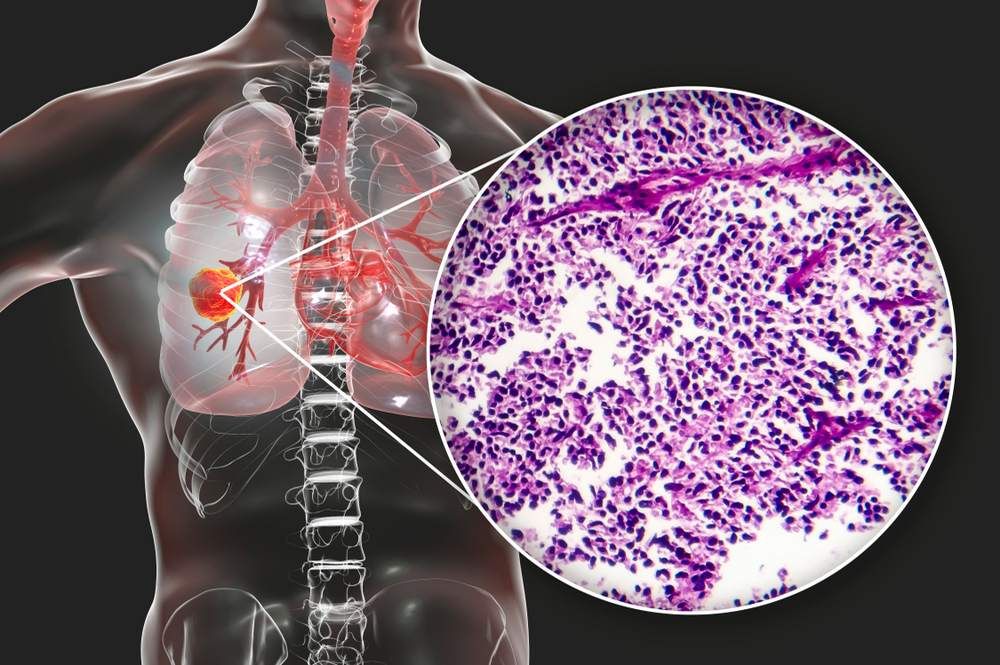First Patient Dosed in Trial of Plinabulin, Keytruda And Chemo in SCLC
Dendritic cell maturation agent plinabulin, immunotherapy and chemotherapy are being studied in first-line extensive-stage small cell lung cancer.
Researchers will investigate the triple IO combination in patients with extensive-stage small cell lung cancer.

The first patient was dosed in a phase 2 study of plinabulin and Keytruda (pembrolizumab) plus etoposide/platinum chemotherapy (EP). The study is examining the combination in frontline extensive-stage small cell lung cancer (ES-SCLC), according to an announcement from BeyondSpring, the manufacturer of plinabulin.
The trial — which has an estimated enrollment of 45 patients — will be completed around December 2025, per its clinicaltrials.gov listing.
BeyondSpring announced last year that it kicked off a trial investigating plinabulin and Keytruda with docetaxel. The treatment combination treated patients with previously treated non-small cell lung cancer whose disease worsened after immunotherapy with or without platinum doublet chemotherapy. That study is estimated to be completed by the end of 2025, according to clinicaltrials.gov.
We are pleased to start this second [investigator-initiated] study with [Keytruda manufacturer] Merck. … We believe in the collateral sensitivity and efficacy potential of this triple IO combination in both front and later lines of cancer treatment. Plinabulin’s unique DC maturation mechanism may pose to be the ‘bridge’ between tumor neo-antigen generation from chemotherapy, and T cell action enabled by PD-1 antibodies. Potential improvements in both duration-of-response and quality-of-life could translate into overall survival benefit. Every moment of a cancer patient’s life is valuable, and our primary goal is to discover innovative treatment strategies that prolong their lives,” stated Dr. Lan Huang, co-founder, chairman and CEO of BeyondSpring, in the company’s recent announcement.
LEARN MORE: Keytruda Meets Trial Goals for Non-Small Cell Lung Cancer Treatment
The current standard treatment for first-line ES-SCLC includes EP and EP plus PD-L1 antibodies, with an objective response rate (percentage of patients whose disease responds partially or completely to treatment) of 60% to 65%, according to BeyondSpring. Additionally, the median overall survival (time patients lives following treatment, regardless of disease status) was 10 to 13 months.
Researchers at the Wuhan Union Hospital in China will evaluate the efficacy and safety of plinabulin, described by BeyondSpring as “a potent dendritic cell (DC) maturation agent,” in combination with the immunotherapy Keytruda plus EP. The study will also evaluate primary research endpoint of the 12-month progression-free survival (PFS) rate, or the percentage of patients whose disease has not spread or worsened a year after treatment.
Every three weeks, patients will receive intravenous Keytruda on Day 1, intravenous etoposide on Days 1, 2 and 3, intravenous carboplatin or cisplatin on Day 1 and intravenous plinabulin on Day 1, according to the news release.
LEARN MORE: For Patients With Small Cell Lung Cancer, It’s a Time to Be Hopeful
“Although the current therapies in first-line ES-SCLC, including PD-L1 antibody and EP combination have had a high ORR, the duration of response is still short with median PFS of [less than] 6 months. … Adding plinabulin, a potent DC maturation agent, to [Keytruda] plus EP, could potentially enable a durable response and improve PFS. This combination study represents an important step forward to address this unmet medical need. I am eager to evaluate this treatment in clinical settings, ensuring that cutting-edge, advanced therapies are translated to cancer care worldwide,” said Dr. Xiaorong Dong, principal investigator for the study, in the news release.
For more news on cancer updates, research and education, don’t forget to subscribe to CURE®’s newsletters here.